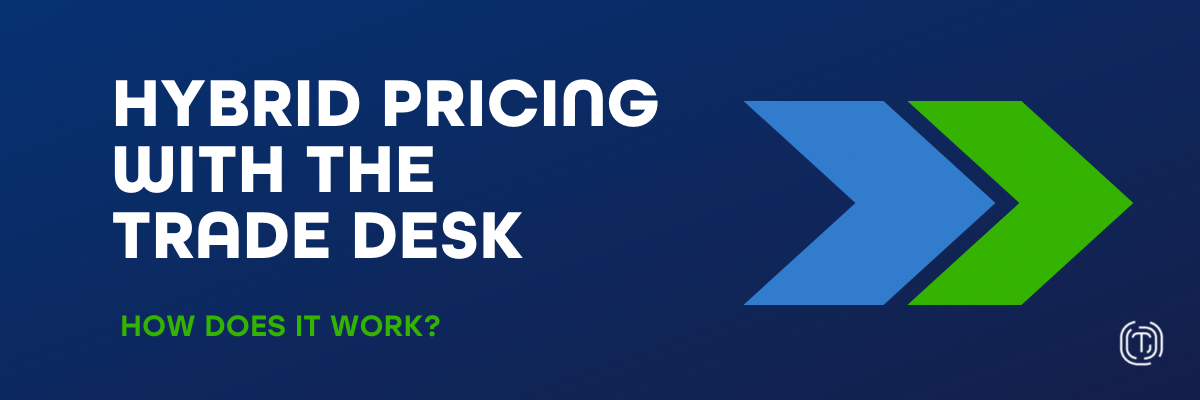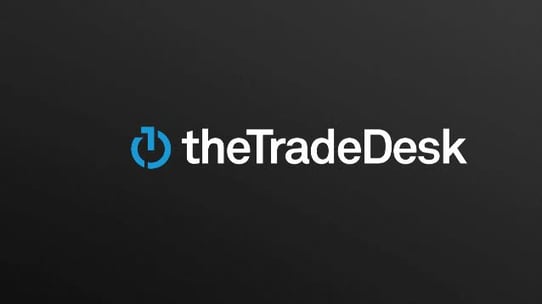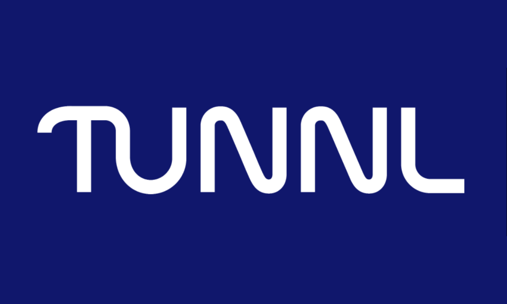Hybrid Pricing with The Trade Desk: How Does It Work?

Are you an advertiser that manages multiple digital ad campaigns through programmatic ad platforms? If so, you are probably familiar with the demand-side platform (DSP) system, where you can manage multiple accounts through one interface.
One of the most favored DSPs for Tunnl clients is The Trade Desk, where you can take advantage of real-time programmatic marketing automation for all of your campaigns.
Tunnl’s hundreds of prebuilt and premium audiences, including the Premier Audience Suite, can be activated within The Trade Desk, helping advertisers launch their campaigns quickly with laser-focused audience data to reach the right people, with the right message, on the right channels.
Recently, The Trade Desk changed their pricing structure to a hybrid model. But what does this mean exactly, and should Tunnl clients anticipate cost changes when activating their audiences?
While the new hybrid pricing model on The Trade Desk may work for most of our clients, we understand it will not be the best fit for everyone. That’s why we want to make sure everyone understands how the model works, so you can make the best planning decisions moving forward in your outreach campaigns.
In this article, we’ll outline hybrid pricing, what the new pricing model looks like in The Trade Desk, and how Tunnl clients may be affected. This way, you can clearly understand the cost structure for Tunnl’s audiences in The Trade Desk and how it differs from other platforms.
Ready? Let’s dive in.
What Is The Trade Desk?
The Trade Desk (sometimes called TTD for short) is a programmatic buying platform with the largest DSP in the world. This DSP is directly integrated with numerous ad space sellers to deliver digital ads at scale.
The Trade Desk provides advertisers with a very convenient way to access and activate audiences against their outreach campaigns.
 The Trade Desk having the largest inventory of programmatic advertising of any media buying platform also benefits advertisers who want to make the most of their audience investments.
The Trade Desk having the largest inventory of programmatic advertising of any media buying platform also benefits advertisers who want to make the most of their audience investments.
Many advertisers and media buyers see their audiences shrink in size once those audiences are available within an advertising platform. This is due to the original audience not perfectly matching the inventories available within the data marketplace and advertising platform they are using.
However, because The Trade Desk has such an expansive programmatic advertising inventory, more individuals can be matched back to the original audience, resulting in greatly improved audience numbers.
The Trade Desk’s sizable inventory means campaigns can deliver more ads to more members of the audience who need to see an ad.
Now, The Trade Desk — one of the most popular DSPs in the world — has made changes to how they charge users to activate audiences on their platform, shifting to a “hybrid” pricing model.
Let’s explore what that means.
What Is Hybrid Pricing? Definition & Examples
Before we define hybrid pricing, we must first understand CPMs and POMs. These are the two main ways that advertisers pay to activate audiences in platforms and data marketplaces:
- Cost Per Mille (CPM): Also known as “cost per thousand impressions,” this pricing model means that you pay a set price (usually $1.50–$2.50) each time your audience-backed advertisement reaches one thousand individuals.
- Percent of Media Spend (POM): The POM model means that you pay a certain percentage of your gross media buy at once (typically 10–20%) instead of a fixed rate per thousand impressions (CPM). This is more often preferred for smaller or more niche markets where thousands or millions of impressions are not guaranteed.
Certain platforms, like The Trade Desk, now require a hybrid of CPM and POM pricing models. This is known as hybrid pricing, wherein a POM or CPM pricing model may be used depending on which will result in a lower cost for the advertiser.
To understand how this hybrid pricing structure works, let’s take a look at what it could look like in action.
 For example, if a campaign ran $1,000 worth of media with 1,000,000 impressions, the hybrid pricing model would implement a 20% POM rather than a $2.25 CPM cap. Why? Because the former would be more cost effective: the $2.25 CPM would have created a larger data cost ($2,250) than the 20% POM ($200).
For example, if a campaign ran $1,000 worth of media with 1,000,000 impressions, the hybrid pricing model would implement a 20% POM rather than a $2.25 CPM cap. Why? Because the former would be more cost effective: the $2.25 CPM would have created a larger data cost ($2,250) than the 20% POM ($200).
With the hybrid pricing model, the smaller cost is automatically implemented, better positioning advertisers to optimize their media spend.
Let’s explore another example.
If a campaign ran $2,000 worth of media for 100,000 impressions, the hybrid pricing model would implement the CPM cap of $2.25 rather than the 20% POM. Again, this is due to a preference for the smaller cost; the cost for 100,000 impressions using a $2.25 CPM cap would create a data cost of $225, while a 20% POM would create a data cost of $400.
The CPM cap here is the smaller cost and would be used.
The Trade Desk has now adopted this hybrid pricing model. But what does that mean for you when activating your Tunnl audiences on this platform?
What Pricing Differences for Tunnl Audiences Can I Expect In The Trade Desk?
The vast majority of Tunnl’s pricing for activating our audiences is based on a CPM or a POM. However, due to The Trade Desk’s hybrid pricing structure, Tunnl’s pricing will differ here compared to other platforms.
When Tunnl’s audiences are activated on The Trade Desk, the POM rate will be in use until the CPM cap is reached. Your data costs will not exceed the CPM rate as you continue to scale more impressions.
The Trade Desk has implemented this hybrid pricing structure for all audiences with CPMs below $5, which directly affects all of Tunnl’s audiences.
Our data availability on The Trade Desk has not changed, and a hybrid pricing model will be in effect for us on The Trade Desk until further notice.
Now you may wonder, will Tunnl audiences have new pricing on other platforms beyond The Trade Desk?
The answer is no.
Excluding The Trade Desk, all platforms will maintain non-hybrid POM or CPM pricing for Tunnl audiences. So, if a media buyer wants to activate our audiences on social media, for example, that advertising will continue to use a POM cost structure. All other inventory will continue using a CPM cost structure.
Where Can I Find More Information on Data Usage Pricing?
We understand that data usage and pricing for activating audiences can feel overwhelming. To ease that overwhelm, we at Tunnl have developed several resources that help you break down these often complicated topics. We want you to be able to clearly and confidently understand what data usage means and how much you can anticipate paying for our data.
Need a breakdown of how Tunnl calculates pricing for data usage? We have you covered. Take a look at the article linked below to learn all about data usage, why Tunnl charges for it, and what you can expect for pricing.



